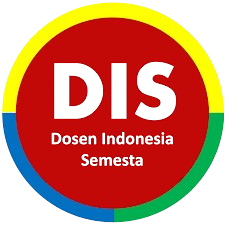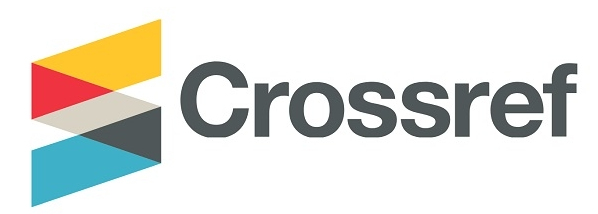A Descriptive Study on the Implementation of SAMR Model in English Language Teaching of Eleventh Grade Students in Banyuwangi Senior High Schools
DOI:
https://doi.org/10.36526/ln.v4i1.1444Keywords:
English Language Teaching; SAMR ModelAbstract
This is descriptive qualitative research design. The respondent of the research were taken by using purposive sampling. The respondent were three English teachers in SMAN 1 Banyuwangi, SMAN 1 Giri and SMAN 1 Glagah. The data were taken by using documentation, interview and questionnaire. The researcher analyzed the data of questionnaire by using Likert scale. The result of the data analysis was determined based on the SAMR model. Based on the data analyzed by using Likert scale, the English teachers in Banyuwangi high schools often implemented SAMR in English language teaching and the index percentage was 60%. The percentage of substitution level was 67%, as a result the respondents often used technology in substitution level. The percentage of augmentation was 62%, so the English teacher in Banyuwangi high schools often implemented technology in augmentation level. In Modification level, the percentage was 62%, it means the English teachers in Banyuwangi senior high schools often used technology in modification level. The percentage of the redefinition was 50%, as a result, the English teachers of Banyuwangi high schools seldom implemented technology in redefinition level. The English teachers used technology to design the material, so students can understand the material easily. The technology mostly used was LCD and laptop as the tools, also power point and video as the media. the problem that was faced by the respondents was the weakness of WIFI signal. The teachers often used technology in substitution level, augmentation level, and modification level. Yet, the teachers seldom used technology in redefinition level. So, the English teachers are suggested to redesign the material creatively and attractively by using varied application in order to make students more creative and used internet for education by using varied application.
References
Bax, S. (2002). CALL—past, present and future. Science Direct, 13-28. Retrieved from www.sciencedirect.com.
Esterberg, K. G. (2002). Qualitative Methods in Social Research. New York: Mc Graw Hill.
Gorman, M. (2015). The SAMR Model of Technology Integration Article. http://21centuryedtech.wordpress.com. Retrieved on June 08, 2018.
Kamijo, M. M. (2017). Evaluating Mobile Learning Activities. TESOL Connections, 10-15.
Khotari, C. R. (2009). Research Methodology: Methods & Techniques (Second Revised Edition). New Delhi: New Age International Publisers.
Killedar, M. (2008). Effectiveness of Learning Process Using “WEB Technology” in the Distance Learning System. Turkish Online Journal of Distance Education, 9(4), 105-108.
Lobo, A. G. & Jimenez, R. L. (2016). Evaluating Projects Implemented in Basic Grammar Courses Using the SAMR Model. (Thesis, Universidad Nacional de Costa Rica, Costa Rica). Retrieved from https://www.cilap.una.ac.cr
Lyddon, P. A. (2016). Mobile-assisted language learning and language learner autonomy. In S. Papadima-Sophocleous, L. Bradley, & S. Thouësny (Eds), CALL communities and culture – short papers from EUROCALL 2016 (pp. 302-306). Research- publishing.net. https://doi.org/10.14705/rpnet. 2016. eurocall2016.579. Retrieved on May 10th 2018.
Marino, R. C. et al. (2015). The Advanced Use of Technology to Enhance Personal and Professional Growth During Supervision Process for Graduate Students in Counselor Education Programs. VISTAS Online, 1-9. Retrieved from http://www.counseling.org/knowledge-center/vist
Nakapan, W. (2016). Using the SAMR Model to Transform Mobile Learning in A History of Art and Architecture Classroom. The Association for Computer- Aided Architectural Design Research in Asia (CAADRIA), 810-818. Rangsit University.
Pragoto, A. H. (2014). Descriptive Study on The Implementation of Teaching Reading to The Eleventh Grade Students of Senior High School of Assalam Surakarta in 2012/2013 Academic Year. (Thesis, Muhammadiyah University of Surakarta, Surakarta). Retrieved from http://eprints. ums.ac.id
Raissova. et al. (2015). Mobile-Assisted Learning as a Condition for Effective Development of Engineering students‟ Foreign language Competence. International Education Studies, 8(7), 158-167.
Romrell, D., Kidder, C. L., & Wood, E. (2013). The SAMR Model as a Framework for Evaluating mLearning. Idaho University.
Sugiyono. (2009). Metode Penelitian Kuantitatif, Kualitatif dan R & D. Bandung: Alfabeta.
Tsybulsky, D., & Levin, I. (2017). SAMR Framework for Study Technology Integration in Science Education. International Conference New Perspectives in Science Education. Tel Aviv University.
Downloads
Published
How to Cite
Issue
Section
License
This work is licensed under a Creative Commons Attribution-ShareAlike 4.0 International License.


















